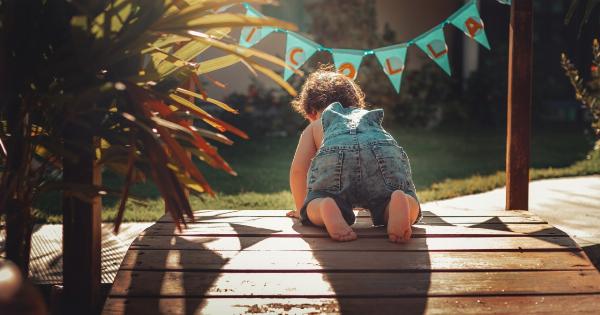When it comes to our little ones, ensuring their safety during sleep is of utmost importance. One key aspect of this is choosing the right sleeping position for babies.
While many parents opt for placing their infants on their stomachs to sleep, recent research suggests that this practice may pose risks to their health and well-being. In this article, we will explore why back sleeping is the best position for babies and why stomach sleeping should be avoided.
The Back to Sleep Campaign
In 1994, the American Academy of Pediatrics (AAP) launched the Back to Sleep campaign, urging parents to place their babies on their backs to sleep.
This campaign aimed to reduce the occurrence of Sudden Infant Death Syndrome (SIDS), which is the leading cause of death in infants between one month and one year of age. The campaign achieved remarkable success, and since its initiation, the incidence of SIDS has significantly decreased.
Understanding the Risks of Stomach Sleeping for Babies
Stomach sleeping, also known as prone sleeping, can increase the risk of SIDS and other sleep-related hazards. Here are some of the dangers associated with this sleeping position:.
1. Reduced Oxygen Supply
When a baby sleeps on their stomach, their face may be pressed against the mattress or bedding. This can cause a decrease in the amount of oxygen they receive, leading to suffocation or oxygen deprivation.
Babies who sleep on their stomachs may also re-breathe their own exhaled carbon dioxide, further compromising their oxygen levels.
2. Difficulty Regulating Body Temperature
Babies are not yet fully capable of regulating their body temperature, and placing them on their stomachs can exacerbate this issue. When sleeping face-down, babies may have difficulty dissipating heat, which increases their risk of overheating.
Overheating has been associated with an increased risk of SIDS.
3. Increased Risk of Choking
Stomach sleeping can lead to an increased risk of choking, especially if an infant spits up during sleep. When lying on their stomach, babies are less able to clear their airways, and the spit-up can become trapped, obstructing their breathing.
4. Abnormal Head Shapes
Regularly sleeping on their stomachs can cause infants’ skulls to flatten, leading to a condition known as plagiocephaly.
This can result in an uneven head shape and potential developmental issues, such as a delay in acquiring certain motor skills.
5. Increased Risk of Infections
Stomach sleeping increases the chances of babies coming into contact with allergens, dust mites, and other potential sources of infections.
When lying face-down, babies are more likely to inhale these substances, which can exacerbate respiratory problems or trigger allergies.
6. Delayed Motor Development
Research shows that babies who sleep primarily on their stomachs may experience developmental delays in motor skills, such as rolling over, crawling, and sitting up.
The lack of freedom of movement during sleep can hinder their progress in reaching these crucial milestones.
7. Increased Risk of Suffocation
Babies who sleep on their stomachs are more prone to becoming trapped in bedding or suffocating on pillows or blankets. The soft materials can cover their face, obstructing their airways and potentially leading to severe consequences.
Tips for Promoting Safe Sleep
To ensure your baby’s safety during sleep, follow these guidelines:.
1. Always Place Babies on Their Backs to Sleep
Make it a habit to place your baby on their back when putting them down to sleep. This reduces the risk of SIDS and other sleep-related hazards.
2. Provide a Safe Sleeping Environment
Ensure that your baby’s sleep environment is safe. Use a firm mattress, fitted sheets, and remove any loose bedding, pillows, or stuffed toys that may pose suffocation hazards.
3. Maintain Optimal Room Temperature
Keep the room where your baby sleeps at a comfortable temperature, around 68 to 72 degrees Fahrenheit. This can help prevent overheating during sleep.
4. Utilize a Safe Sleeping Surface
Choose a crib or bassinet that meets safety standards and provides a firm, flat surface for your baby to sleep on. Avoid co-sleeping arrangements or using other sleep surfaces that may increase the risk of suffocation or injury.
5. Encourage Tummy Time
While it is important for babies to sleep on their backs, they should also have plenty of supervised tummy time during their awake hours. This helps promote motor development and prevents flat head syndrome.
Conclusion
Back sleeping is widely recognized as the safest sleeping position for babies. It significantly reduces the risk of SIDS and other sleep-related hazards compared to stomach sleeping.
By following safe sleep practices, parents can provide their little ones with a secure and healthy environment in which to rest and grow.






























